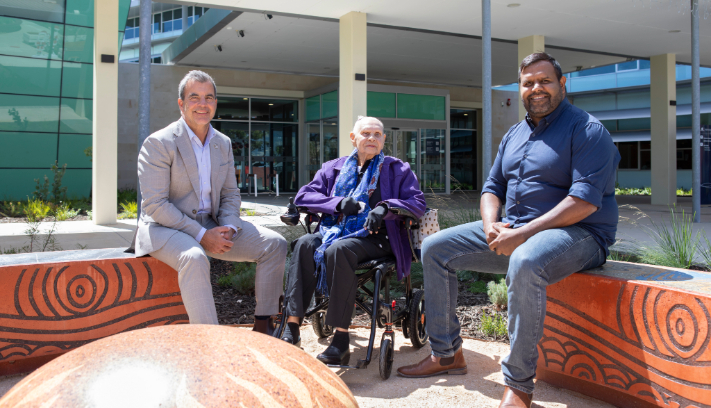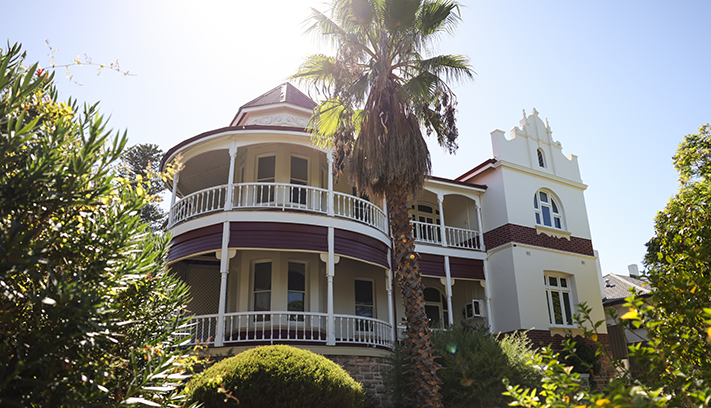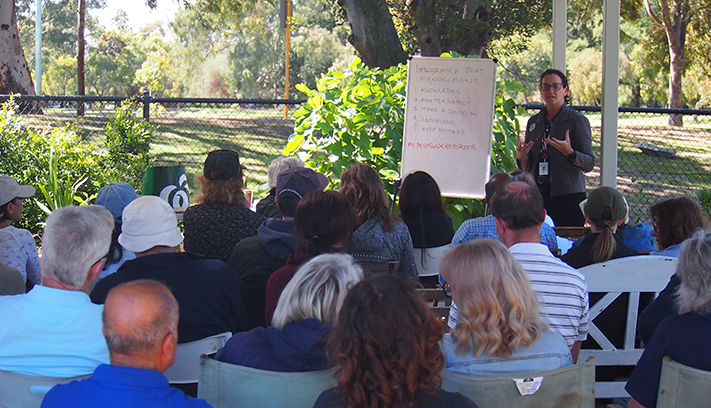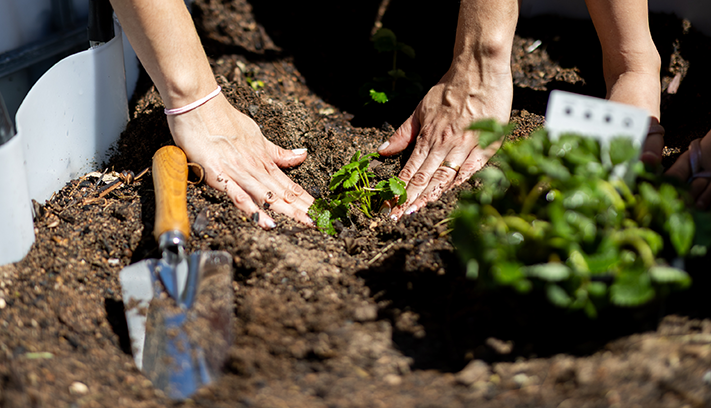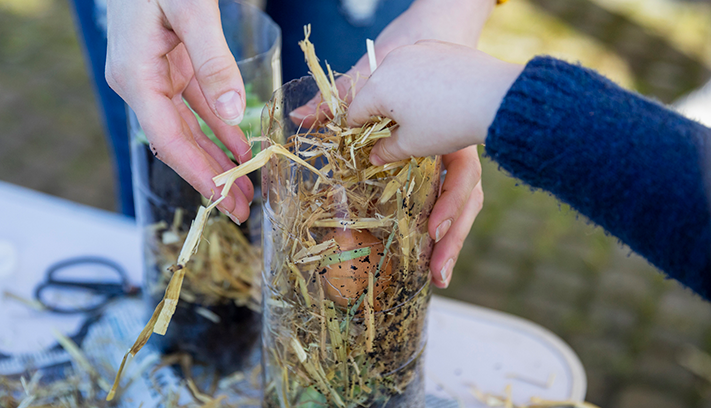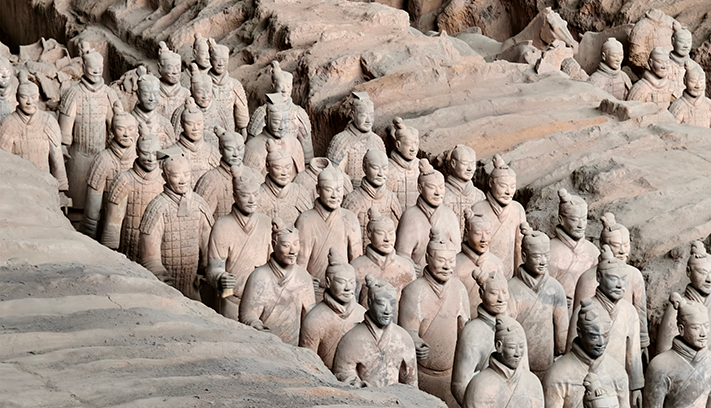
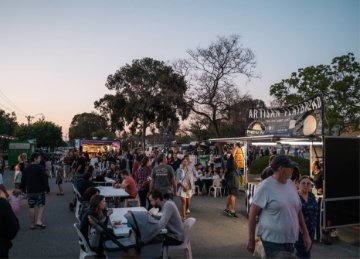
The local community describes Inglewood as vibrant, friendly, connected. To better understand what is means to be ‘a local’ our suburb profile seeks to understand the local stories Koora (past), Yeyi (present), Boordawan (future) and respond to Ngalang Maya (our place). This snapshot identifies the unique character of Inglewood’s neighbourhood and helps the City rethink how we deliver services with a local focus.
Inglewood has a high heritage value, with cultural and historical significance.
What it means to be a 'local'
With a name thought to have been derived from the Norwegian barque Inglewood (its voyage was mentioned in The West Australian on May 24, 1904), the suburb of Inglewood began when land was first granted to John Gregory in 1831.
Regarded as part of Maylands in the early years, Inglewood was initially developed by a company called Gold Estates of Australia and a section now referred to as 'The Avenues' was the first to be subdivided. This development included area from the railway line to North Street and eventually through to Eleventh Avenue and Dundas Road; the latter subdivision was named Inglewood Estate.
Significant landmarks
Significant landmarks include the prominent clock tower on the corner of Beaufort Street and Dundas Road, highly visible to northbound traffic along Beaufort Street, and the Inglewood Civic Centre, opened in 1991, incorporating the local library, an autumn centre and children's centre.
Local community groups
- Inglewood on Beaufort
- Inglewood Arts Hub
- Friends of Inglewood Triangle
- Inglewood Lions Club
- Inglewood Seniors Club
- Inglewood Playgroup.
Local community garden
Parks and playgrounds
Events and markets
Places to catch up
Local community centres
- Stirling Leisure - Inglewood
- Stirling Libraries - Inglewood
- Crafternoons - Stirling Libraries - Inglewood, Meeting Room, 895 Beaufort Street, Inglewood on Thursdays, 1.00pm - 3.00pm.
- Residents of all ages are encouraged to join us at Stirling Community Centres - Bob Daniel - Inglewood to enjoy some classic board games. It’s a great way to meet new people and all you need to do is bring your own games, refreshments and snacks. The club meets on the third Saturday of the month from 3.00pm.
Local schools
Local clubs
- Mount Lawley Golf Course
- Mount Lawley Inglewood Cricket Club
- Mount Lawley Inglewood Junior Football Club
- Mount Lawley Amateur Football Club
- Perth Baseball Club
- Inglewood Bowling & Sports Club
- Inglewood United Soccer
- Alexander Florina Football Club
- Inglewood United Football Club
- Inglewood Masters Swimming Club
- Riverside Swimming Club
- Inglewood Little Athletics.
Local focus
These are the top local priorities you've told us are important for Inglewood.
What you've told us so far
"Preventing break-ins."
What we're doing
Community Patrols actively patrol the suburb of Inglewood. Targeted patrols can be activated for officers to attend specific areas at times requested by residents.
The City currently operates 19 Ranger Service vehicles between 7.00am and 7.00pm, Monday to Sunday, with four Community Patrol vehicles operating 24/7, 365 days a year. Patrol locations and equipment deployment are guided by data, rather than a blanket approach, ensuring resources are focused on areas of greatest need.
This includes the ability to increase the number of Community Patrol vehicles to up to seven during priority times. The City also offers a Safer Suburbs rebate, which supports residents to install CCTV and other security-related equipment to help secure their property and discourage break-ins.
To report suspicious behaviour, call the City's Community Patrol on 1300 365 356 (24/7 services) or report online.
Learn more about community safety initiatives in the City.
What you've told us so far
"Ensure that the Beaufort Street crossing at the library is safe. Too many drivers go through red lights and exceed the 40 km/h speed limit."
What we're doing
This matter was raised at the Council meeting on 10 June 2025, with the Mayor to write to the Minister for Transport and the Member for Maylands to request a review of options to improve safety at the crossing.
View the City of Stirling Minutes and Agendas.
What you've told us so far
"Underground power, which will hopefully deliver better street lighting! Some streets are very gloomy and unsafe at night."
"Underground power to help preserve street trees, improve the environment."
What we're doing
The Underground Power Program is determined by Western Power based on the condition of assets, with a link to the program available on the City's website.
What you've told us so far
"Native plants for local wildlife."
"Maintaining green space and tree canopy. Halt subdivision which is deleting trees and changing the character of the neighbourhood (traffic, density, hardscaping, etc)"
What we're doing
The City is committed to managing our parks and reserves to maximise their value for local wildlife. During the 2024/25 budget cycle, the City trialled a range of new planting techniques to promote biodiversity, provide forage for endangered species, and create new habitat. This work will continue in the 2025/26 financial year.
Facts
Inglewood population
Average number of people per household
The average age in Inglewood is 39 years old
Top five birthplaces
Median weekly household income
84% of residents are satisfied with liveability
Local plans
Inglewood has experienced 2 distinct booms in residential growth:
- Between 1904 and 1920, single residential housing was built to accommodate the blue-collar population
- Around World War Two between 1935 and 1940, more development occurred.
The majority of residences in Inglewood are of pre-war vintage (many are of a Federation or Californian bungalow style) and towards Mount Lawley area, a typical lot size is 730m2, increasing to up to 1400m2 east of Beaufort Street.
Inglewood has a high heritage value, with numerous places of cultural and historical significance, and many of the older dwellings have been renovated and restored to their original styles. In addition to character housing, there are 1960s flats and modern unit developments scattered throughout the suburb.
The main commercial area within Inglewood is centred on Beaufort Street and contains retail services, a library and a recreation centre and there are several small shops that cater for daily needs.
Inglewood has six local open spaces, one community space and two district open spaces.
A Locally Significant Natural Area includes Inglewood Triangle Reserve, which also has ecological significance.
Inglewood contains many recreational facilities, including Stirling Leisure - Inglewood, which features a pool and fitness areas, Mount Lawley Golf Course and Macaulay Park.
Inglewood Primary School meets the educational needs for younger students while the Brightwater Inglewood Nursing Home provides services for elderly residents.
Projects and engagements




_457x249.jpg)

